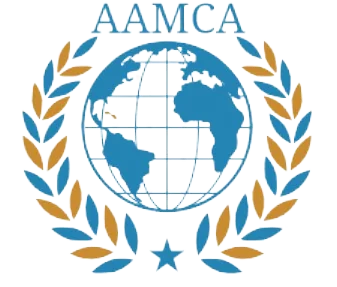Understanding the New Landscape of Power
The modern geopolitical arena has undergone significant transformation, evolving into a multipolar world where strategic power is not solely defined by traditional metrics of military and economic superiority. Instead, there is a growing recognition that control over perceptions and narratives has become an equally critical dimension of power. Specifically, this shift highlights a complex interplay between overt actions, often termed the “visible theatre,” and the more subtle manipulations operating in the “unseen backstage.” This duality demands a reevaluation of how nations and actors exert influence on the global stage.
The visible theatre comprises activities that are readily observable, such as military demonstrations, economic partnerships, and diplomatic engagements. In contrast, the unseen backstage involves the strategic use of information, media, and narratives designed to shape public perceptions and policies discreetly but effectively. This dual framework illustrates how actors in the international system must navigate both public actions and behind-the-scenes maneuvers to secure their interests and influence outcomes.
Strategies of Major Powers: A Comparative Analysis
The strategic landscape of the contemporary world is characterized by a multipolar framework, wherein major powers employ distinctive and often contrasting strategies to shape perceptions and narratives on the global stage. The United States’ approach can be encapsulated by the ‘madman theory,’ which emphasizes unpredictability and the element of surprise. This method involves dramatic gestures and actions designed to instill fear or uncertainty among adversaries and allies alike. By leveraging a reputation for unpredictability, the United States aims to deter aggression and maintain its influence, thereby asserting its position in the geopolitical arena.
In contrast, Russia adopts a strategy termed ‘deep control,’ which revolves around creating strategic ambiguity and perpetuating uncertainty. This approach allows Russia to maneuver through complex international relations while simultaneously maintaining an upper hand. By operating in grey zones, employing hybrid warfare tactics, and utilizing information warfare to influence public perception, Russia aims to dominate the narrative surrounding its actions, thereby fostering its political objectives without overt aggression.
China’s strategy, often described as ‘silence power,’ presents a different perspective on influence. This method hinges on a patient and gradual accumulation of soft power, wherein China engages in diplomatic, economic, and cultural initiatives designed to enhance its global standing. Unlike the other powers that often rely on overt displays of strength, China’s approach is characterized by long-term investment in relationships and infrastructure, illustrating a strategic foresight aimed at sustaining its climb to prominence.
The European Union, while promoting normative values such as democracy and human rights, encounters limitations due to its reliance on consensus and the lack of military autonomy. This diffusion of power often hampers its ability to respond decisively, revealing inherent weaknesses in its strategy that have implications for its influence on the global narrative. Analyzing these varied strategies underscores the multifaceted nature of power in a multipolar world, highlighting how different powers articulate their dominance through unique methods.
Weaponizing Perception: Tools and Tactics
In today’s multipolar world, the battle for narrative control has become increasingly intricate, with various tools and tactics emerging as pivotal methods in this contemporary struggle. One prominent concept in this arena is ‘weaponized truth,’ which refers to the manipulation of information to create competing narratives that advance specific agendas. This tactic allows various state and non-state actors to shape public perception, fostering environments where misinformation can proliferate. By distorting facts or selectively presenting information, entities can create a narrative that aligns with their interests, thereby exerting influence over the public and decision-making processes.
Another crucial element in this narrative warfare is emotional deterrence. Actors adept in this field leverage fear and societal vulnerabilities to sway opinion. For instance, during political campaigns or crises, leaders may exploit existing fears surrounding issues like national security, economic stability, or social cohesion. Such emotional appeals not only shape perceptions but also manipulate the course of action taken by individuals and institutions. The impact of fear as a weapon becomes increasingly profound, particularly in a society that is already grappling with various uncertainties and challenges.
Moreover, technological advancements play a significant role in enhancing these manipulative tactics. The advent of modern technologies, such as artificial intelligence and pervasive social media platforms, has facilitated the rapid dissemination of misleading information, creating digital illusions that can alter public perception in real-time. Social media, for instance, acts as a double-edged sword; while it serves as a channel for democratizing information, it also allows for the erosion of truth through the spread of fake news and echo chambers. These phenomena echo Plato’s allegory of the cave, wherein individuals are trapped in a distorted reality, only perceiving shadows of the real world. Thus, as we navigate this complex landscape, understanding the mechanisms behind the weaponization of perception is essential for fostering informed decision-making and critical thinking in the face of manipulated narratives.
Future Scenarios and the Quest for Stability
As we explore the evolution of strategic power in a multipolar world, it is crucial to consider potential future scenarios that may arise from this shifting landscape. The interplay among various nations, particularly in the context of international relations, presents three primary outcomes: negotiation, unilateral imposition, and accidental escalation. Each of these scenarios carries distinct implications for global stability and governance.
Negotiation, while an ideal approach, is currently deemed unlikely given the prevailing tensions and mistrust among major powers. In a multipolar context, achieving consensus often proves challenging due to divergent interests and priorities. The complexity of interactions means that nations may favor a more confrontational stance rather than engaging in dialogue. This absence of robust negotiation mechanisms could exacerbate tensions and undermine efforts to establish peaceful resolutions.
The second scenario, unilateral imposition, poses significant risks. As states seek to enhance their strategic advantages, there is a tendency for powerful nations to impose their will on weaker states or regions. This dynamic often leads to increased conflicts, as those on the receiving end of such actions may feel compelled to resist or retaliate. The potential for spiraling tensions, resulting from unilateral decisions, raises the specter of instability across various regions.
The most probable catalyst for crisis in this multipolar world is accidental escalation. As miscalculations and misunderstandings become more frequent, the risk of unintended confrontations increases. The intricate web of alliances and rivalries means that a minor incident could trigger a chain reaction, leading to larger conflicts. In particular, nations like Romania face heightened challenges, as their resilience now relies on the ability to discern genuine threats from fabricated narratives. Stability, in this evolving context, is not a permanent state but a constantly shifting objective, requiring vigilance and adaptability.
Ultimately, victory in this new strategic environment will be awarded to those who can skillfully navigate the complex realities of multipolar dynamics, blending the spectacle of power with an astute understanding of underlying truths.




